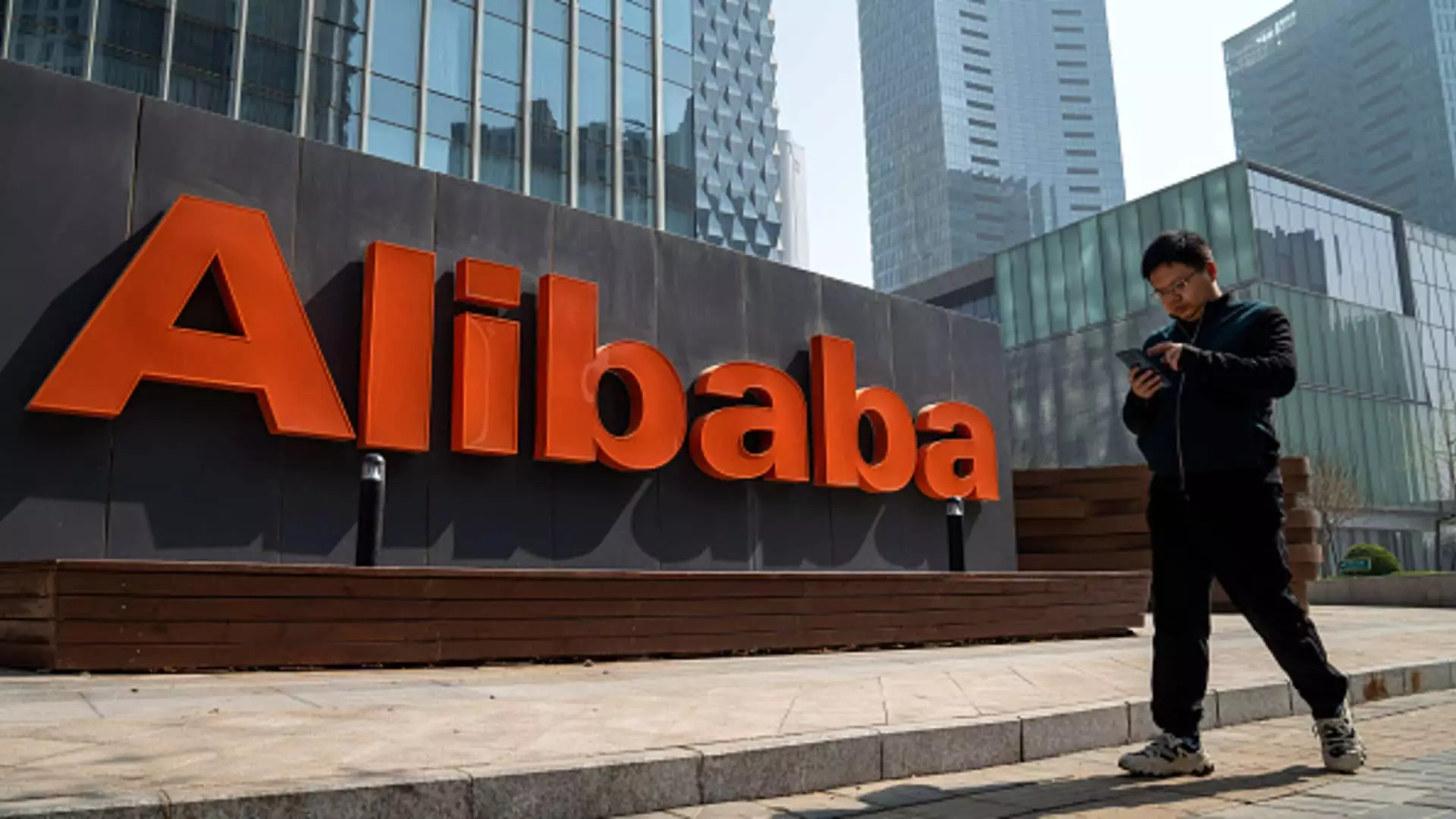Chinese e-commerce titan Alibaba has recently released its financial results for the September quarter, revealing a complex scenario marked by heightened profits but disappointing revenues. This juxtaposition underscores the ongoing challenges faced by the company as it navigates the headwinds of a sluggish economy, evolving consumer behavior, and heightened regulatory scrutiny. In this analysis, we will delve into the various components of Alibaba’s financial performance, exploring the implications for the company and its stakeholders.
Alibaba reported an impressive 58% increase in net income, soaring to a substantial 43.9 billion Chinese yuan ($6.07 billion). This remarkable surge primarily stemmed from favorable shifts in the values of its equity investments and a decrease in impairment charges. The earnings report far exceeded analysts’ expectations, which had predicted a more modest profit of 25.83 billion yuan. This notable discrepancy raises questions about the sustainability of such profit growth considering the broader economic headwinds.
Although the profit figures appear robust, Alibaba’s revenue story is comparatively less favorable. The company reported a revenue of 236.5 billion yuan, which reflects a modest 5% year-on-year increase but falls short of analyst forecasts that estimated revenues would reach 238.9 billion yuan. This divergence between profit growth and revenue performance is indicative of deeper issues within the consumer market, particularly as consumer spending remains tepid in China’s second-largest economy.
Despite missing revenue expectations, Alibaba’s stock has shown resilience, having increased by almost 17% year-to-date, with a 3% uptick observed in premarket trading following the earnings announcement. This reflects market optimism to some extent, though it also speaks to a broader trend where investors are focusing more on profit margins than top-line growth in an uncertain economic landscape.
The ongoing scrutiny of Alibaba’s core business units, particularly Taobao and Tmall Group, adds layers of complexity to the situation. These units reported only a 1% increase in revenue during the latest quarter, highlighting the struggles of the e-commerce giant to fully capitalize on its dominant market position amid a challenging retail environment. Comparatively, competitor JD.com also faced disappointment, underscoring a trend of stalling growth within the sector.
The backdrop against which these results are unfolding is a Chinese economy facing serious obstacles, including a stagnating retail sector exacerbated by an enduring slump in the real estate market. Analysts are now closely observing the impact of recent stimulus initiatives announced by the Chinese government, including a significant 1.4-trillion-yuan package aimed at rejuvenating economic growth.
Positive signals have emerged during October, where retail sales grew by a better-than-expected 4.8% year-on-year. Alibaba’s performance during the recent Singles’ Day shopping holiday was also promising, showcasing “robust growth” in gross merchandise volume—though this metric does not directly correlate with the company’s revenue. The increase in active buyers during this crucial sales period may hint at a potential resurgence in consumer sentiment, which would be a welcome relief for Alibaba and its competitors.
Alibaba’s overseas operations also provided a silver lining, with sales from platforms like Lazada and AliExpress jumping by 29% year-on-year to 31.67 billion yuan. The company’s foray into the cloud services sector showed moderate progress as well, with the Cloud Intelligence Group reporting a 7% increase in sales. This growth, albeit slow, outpaced the 6% growth metric recorded in the previous quarter and reveals Alibaba’s ongoing efforts to establish itself as a leader in the cloud and AI sectors.
The evolving landscape of technology and regulation is critical for Alibaba’s future. CEO Eddie Wu highlighted a notable shift toward AI-related product revenue, which witnessed triple-digit growth. This technological pivot positions Alibaba to better compete against both domestic rivals like Baidu and Huawei, as well as multinationals such as Microsoft and OpenAI.
As Alibaba continues to reinvent itself in a rapidly changing environment, the juxtaposition of soaring profits against falling revenues serves as a reminder of the hurdles the company faces. The tightening regulations from Beijing have necessitated significant operational adjustments, and while the company has responded by bolstering leadership and adjusting strategies, the winds of change may still pose uncertainty for future profitability.
The financial results from the recent quarter will undoubtedly serve as a crucial indicator for investors and analysts alike, as they seek to navigate the complex terrain of the Chinese economy and global market dynamics. Alibaba remains a linchpin in this intricate landscape, and as it adroitly maneuvers through these challenges, its performance could provide vital insights into the broader trajectory of e-commerce in China and beyond.


Leave a Reply